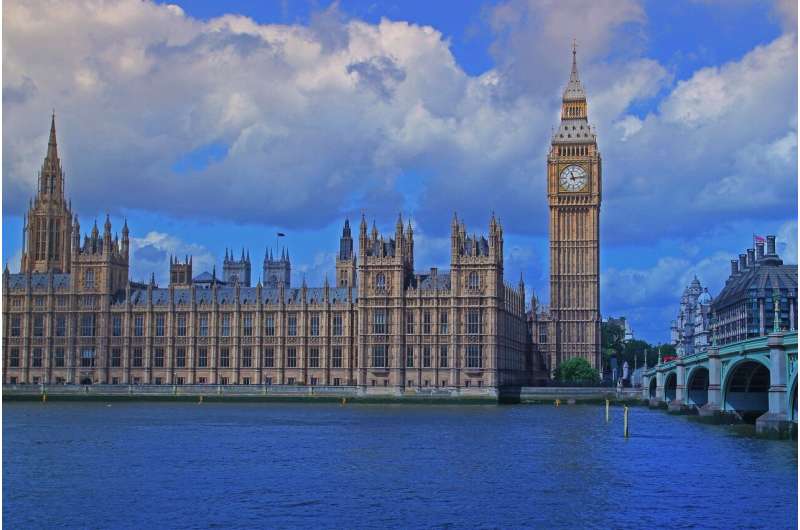This article has been reviewed according to Science X's editorial process and policies. Editors have highlighted the following attributes while ensuring the content's credibility:
fact-checked
trusted source
proofread
Persistent gender imbalances in UK political candidate selections: A call for systemic reform

In a comprehensive analysis by Dr. Sofía Collignon, Senior Lecturer in Comparative Politics at Queen Mary University of London, new light has been shed on the persistent gender disparities in the selection of parliamentary candidates by the U.K.'s Conservative and Labor parties.
Responding to a recent report by the Financial Times, Dr. Collignon's paper highlights the urgent need for systemic reforms to address these imbalances and promote gender equality in British politics.
The article, "Addressing Barriers to Women's Representation in Party Candidate Selections," published in the political and social reform dedicated journal The Political Quarterly, reveals that the Conservative Party continues to nominate a significantly higher proportion of men compared to women.
Of 134 parliamentary selections by the Conservatives, a striking 70% are men. In contrast, Labor's selection shows a more balanced approach, with 56% of their 206 candidates being men. This disparity is reflective of a broader trend observed over the years, notably during the 2019 general election where Labor presented more women candidates than men, marking a historic first for U.K. politics.
Despite efforts by Conservative women's groups such as Women2Win, which has been actively encouraging and supporting female candidates since the mid-2000s, the party has made little progress.
The reasons often cited—such as a lack of supply of female candidates, local candidate preferences, and harassment, abuse, and intimidation (HAI)—are seen as inadequate in addressing the deeper, systemic issues within the party's recruitment processes and organizational culture.
Dr. Collignon's paper argues that these explanations shift the blame onto individual women rather than addressing the structural barriers within the Conservative Party. She emphasizes the need for a shift in focus from "fixing women" to reforming party structures and practices. Drawing on extensive empirical evidence, she advocates for the implementation of quotas and greater transparency in candidate selection processes.
Quotas, which have proven effective globally, are highlighted as a potential quick fix to improve gender representation. Labor's success with all-women shortlists (AWS) since the 1997 general election is cited as a model that could be emulated. However, the Conservative Party has traditionally resisted such measures, necessitating alternative approaches.
One such approach is the enactment of section 106 of the Equality Act 2010, which mandates political parties to publish data on the protected characteristics of their selected candidates. This would enable better monitoring and accountability, encouraging parties to adopt more inclusive selection practices.
Additionally, Dr. Collignon calls for a formal gender and diversity-sensitive political party (G/DSPP) audit. This would involve a thorough assessment of party infrastructure and culture, identifying necessary changes to make them more inclusive and supportive of diverse candidates.
The issue of HAI, while significant, is found to affect women across party lines, diminishing its validity as a sole explanation for the Conservative Party's gender imbalance. The research underscores the need for comprehensive support systems to protect and assist candidates facing such challenges.
In conclusion, Dr. Collignon's paper is a clarion call for the Conservative Party to undertake meaningful reforms if it hopes to rectify the under-representation of women among its MPs. With the next general election on the horizon, there is still time for the party to make significant strides toward gender equality, ensuring a more representative and inclusive political landscape in the U.K.
More information: Sofia Collignon, Addressing Barriers to Women's Representation in Party Candidate Selections, The Political Quarterly (2024). DOI: 10.1111/1467-923X.13397
Provided by Queen Mary, University of London




















